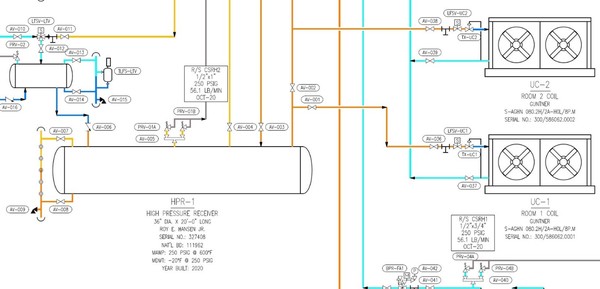P&IDs and Emergencies (Part 4)
Preparation is critical for emergency readiness. At a chemical facility, an accurate P&ID is an indispensable tool to aid hazmat responders in making decisions during a crisis. With this in mind, P&IDs must be readily available to responders at all times. Often, chemical leaks can be stopped by closing a downstream isolation valve. The P&ID is an ideal resource to locate such a valve prior to hazmat team entry. The duration of many emergencies has been extended due to a lack of responder resources. Experience has shown that hazmat teams are reluctant to enter a chemical atmosphere until they have confidence that they can achieve their objectives.
To help illustrate how important P&IDs can be to hazmat responders, consider the following scenario:
An ammonia leak occurs from a refrigeration system. The source of the leak is a 1” high pressure liquid pipe that feeds Room 2. The high pressure receiver has multiple isolation and service valves as depicted below.

It is unlikely that the emergency responders will have the necessary refrigeration knowledge to identify the correct isolation valve while in the field. However, if the P&ID is available to the incident commander and hazmat team prior to entry, they will likely be able to identify that Valve AV-002 is the isolation valve that must be closed to stop the supply of ammonia to Room 2.

This is Part 4 of a series on P&IDs. You can access previous blogs in this series below:
- Part 1: Introduction to P&IDs
- Part 2: P&IDs and SOPs
- Part 3: P&IDs and PHAs

Leave a Reply